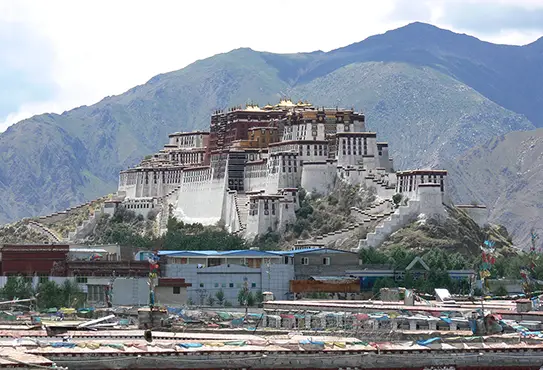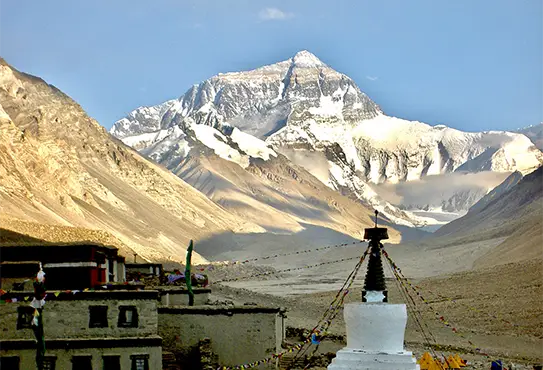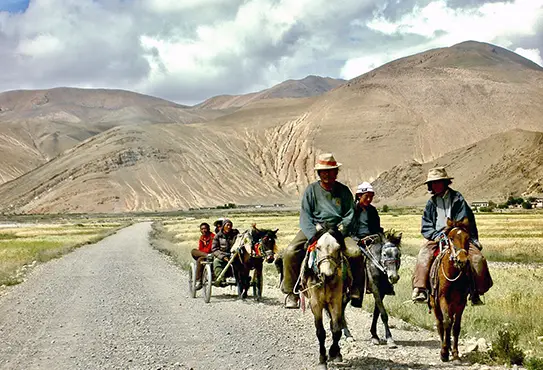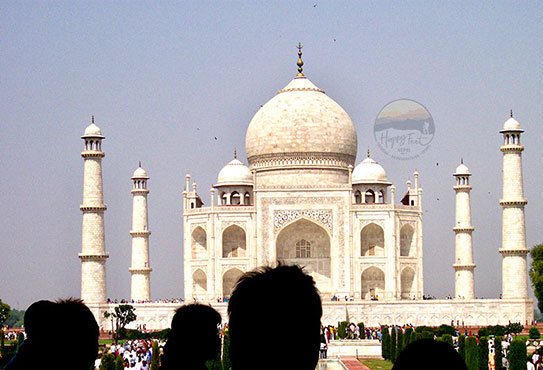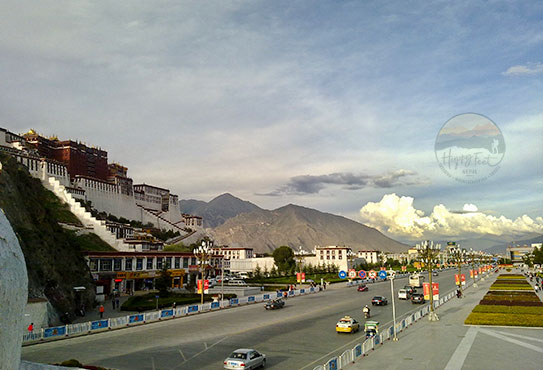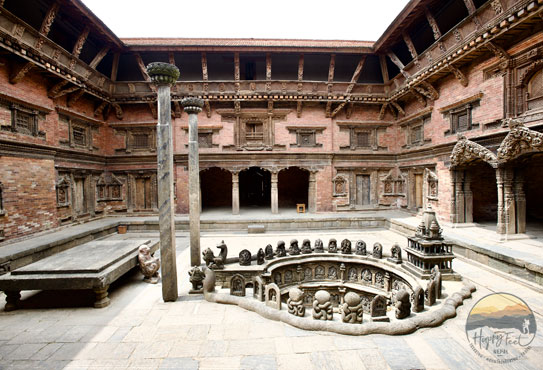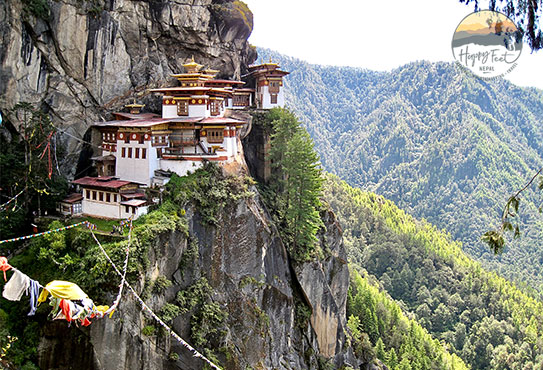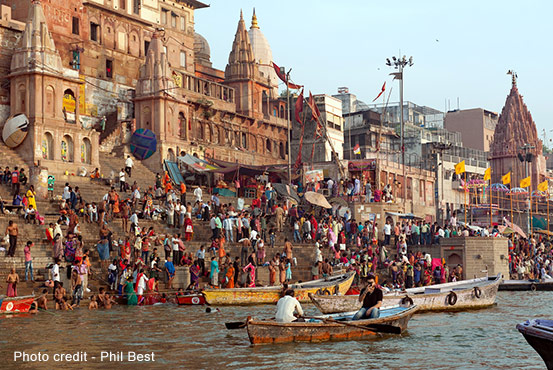-
Sunday - Friday: 9 AM - 4 PM
Incredible Tour of India, Bhutan and Nepal
Tour of Delhi / Rajasthan / MP / UP/ Bhutan / Nepal
The incredible tour of India, Bhutan and Nepal is a complete tour of three countries, combining a great cultural, historical, religious and geographical tour of multi-ethnic, multi-religious and multi-cultural.
The incredible tour of India, Bhutan and Nepal is one of the complete cultural tours of India, Bhutan and Nepal, giving the main focus on India and including the major cultural centres of Bhutan and Nepal. After landing in Delhi, the tour takes you to Varanasi, one of the ancient cities of Asia and an important religious town both for Buddhists and Hindus. Then continues the tour program through some of India’s fabled ancient cities such as Khajuraho, Orchha, Agra, Fatehpur Sikri, Jaipur, Bikaner, Dunes of Jaisalmer, Jodhpur, Udaipur, Mumbai, Konark Sun Temple, Bhubaneshwar, Golden Temple in Amritsar, etcetera, all incredible sites, filled with indescribable palaces, temples and monuments, and incredible histories behind them.
Then take a flight to Bhutan, the last great Himalayan kingdom, spend some days visiting their monasteries, dzongs, markets, towns, and valleys and then board a flight to Nepal, where we will see some of its medieval villages. The Kathmandu Valley contains seven World Heritage sites by UNESCO.
Time flies; to round up the trip, we take a panoramic flight over Mount Everest, the tallest mountain on earth, get escorted to Kathmandu airport with a loving see of formalities, and board a flight back – home!
Arrive in Kathmandu, customs and immigration formalities and claim your baggage, which takes some time. Upon exiting, the arrivals get a traditional welcome from the Happy Feet Nepal representative and transfer to the hotel. Reach the hotel and the rest of the day is free with the possibility of optional excursions (not included), but you can ask to organise any of the tours or stroll through its vibrant streets.
Delhi is a city that is soaked in history. The city has seen the fall and rise of empires. The historical monuments in Delhi include some of the best citadels and forts, which reveal its glorious past. The ruins of the monuments and historical palaces reflect the rich heritage and culture still present in Delhi.
Overnight at Hotel
Morning breakfast at the hotel. Later full, day Visit Old & New Delhi. Visit Old Delhi, starting with the Raj Ghat (closed on Mondays), the memorial where Mahatma Gandhi was cremated. Then visit the Bangla Sabih Sikh Temple and observe the fervour with which the members of the Brotherhood listen to the reading of the Book. Then visit the Great Jamma Masjid Mosque, built by the Shah Jahan rising in the middle of the old city of Old Dehli. Muslim pride prevails in most Hindu territory, especially in the northern part, marking and recalling its ancient supremacy in much of the subcontinent, the conquests achieved in the 16th-19th centuries, and its undoubted influence on the development of the culture of India. From one end of the mosque courtyard, you can see the Red Fort of Delhi or Lal Quila in Hindu, built by the Islamic empire in the seventeenth century.
Further, continue taking a rickshaw ride through the crowded streets of Chandni Chowk full of shops with varied decorations; shoes, backpacks, glasses, cows or goats that sneak into the shops, all under a constant and disturbing disorder and bustle. Lunch at a local restaurant.
In New Delhi, we pass through the Rajpath, the city that Edwin Lutyens built to be the British capital in the so-called Anglo-Indian style, and the India Gate memorial was erected in honour of the soldiers who died during various wars. Parliament Building, Presidential Palace, and ministries. Visit the Qutub Minar, the oldest monument in Delhi, declared a World Heritage Site in 1993.
(driver & car at disposal from 0900 Hrs to 1800 Hrs)
Breakfast and transfer to Delhi airport for a flight to Varanasi. Arrive at Varanasi airport, where you be met and transferred to your hotel, with a visit to Sarnath on the way. Sarnath – located about 10km from Varanasi, is one of the foremost Buddhist centres. Varanasi is the holy site where Lord Buddha preached his first sermon on the four noble truths or, in religious language, the Wheel of Law (Maha-Dharmachakra-Pravartan) set in motion enshrining the principles of his teaching into laws. Two hundred years later, in the third century B.C., the Great Mauryan Emperor Ashoka spread the Buddha’s teaching of love and compassion throughout his vast empire, including Srilanka, Bangladesh, and neighbouring countries and built 84-thousand massive stupas, including in Nepal. And built countless viharas and monasteries and made India the only centre of the Buddhist world until the 15th century. From the third century B.C. to the 11th century A.D., several important Buddhist structures were raised at Sarnath, and today it presents the most expansive ruins among places on the Buddhist trail. There are two ancient stupas for ceremonial public worship, and their present names are Dhamekh and Dharmarajika. Jagat Singh of Varanasi dismantled Dharmarajika in the 18th century. Emperor Ashoka erected several monuments here. Chaukhandi Stupa comes first. Akbar repaired the same to commemorate his father’s visit to Sarnath.
Sarnath Museum – has a rich collection of Buddhist sculptures and images of numerous Buddha and Bodhisattva, considered amongst the finest specimens of Buddhist art. It also has the magnificent Lion Capital, India’s National Emblem. After the visit, Check into your hotel. Rest of the day at leisure.
Overnight at Hotel
Early in the morning, visit the Ghats at the Ganges River; the grandeur of the sacred Ganges River cannot express in words. And the belief leads; bathing here removes all ills and sins. Early in the morning, a boat ride on the holy river is an unforgettable experience, enjoying the sunrise and seeing the Burning Ghats, where cremations are conducted, and the Bathing Ghats, where devotees dip in the holy water and offer prayers. Thousands of pilgrims flock here daily to dip in the sacred waters and worship the sun. Near Manikarnika, the chief burning ghat of Varanasi, is the Charanpaduka pedestal, Lord Vishnu’s footprints preserved in marble. The other important ghats are Asi Ghat, Lala Misi Ghat, Tulsi Ghat, Dandi Ghat, Hanuman Ghat, Ahalya Bai Ghat, Munshi Ghat, Mir Ghat and many more.
After the visit to the ghats, come back to the hotel. Later visit Varanasi city. Varanasi, the City of Lord Shiva, is situated on the bank of the sacred Ganges River and is one of the holiest cities in India. Hindu pilgrims come to bathe in the waters of the Ganges, a ritual that washes away all sins. The city, also known as Banaras or Kashi, is the holiest place for intimate rituals of life and death and takes place in public on the city’s famous ghats (riverbanks). This accessibility to the practices of ancient religious tradition captivates many visitors.
Kashi and Banaras is the city’s name in the past, but its present name Varanasi is a restoration of its founding name, which means the place between two rivers, the Varuna and Assi. It has been a centre of learning and civilisation for over 2000 years and claims to be amongst the world’s ancient most lived cities. Situated on the western bank of the Ganges in a labyrinth of alleyways, Vanarasi has an antique feel but has only a few buildings that are more than a couple of hundred years old due to the marauding Muslim invaders and the destructive tendencies of the Mughal Emperor Aurangzeb.
Lord Buddha enhanced the eminence of Varanasi by preaching his first sermon after attaining enlightenment at Sarnath, located 10km away from Varanasi. The city’s early history, as gleaned from Buddhist literature, speaks of a constant struggle between the dynasties of the Kosalas and Mallas for its possession. Later, it suffered defacement as Muslim invaders destroyed many of its temples.
Breakfast at the hotel. Transfer to the airport, in the afternoon, for your flight to Khajuraho. On arrival in Khajuraho, you are met and escorted to your hotel. Later half-day visit to the world-famous erotic Khajuraho Temples.
Khajuraho – Khajuraho, famous for its magnificent temples, is the former capital of the Chandela Kings and dedicated to Lord Shiva, Lord Vishnu and the Jain Tirthankaras, making Khajuraho one of the most beautiful religious centres of its time. The temple was built between 950 and 1050 AD and is the most exquisite in medieval India. Today Khajuraho is a tiny hamlet without the golden date palms that once graced the entrance to the town and gave it the name “Khajurvahika”, or bearer of the date palm.
The magnificent temples lay neglected and vulnerable to the ravages of Nature with the decline of the Chandela Empire. These superb monuments were rediscovered only in the last century and restored to their current form, granting them the recognition they deserve. Originally there were 85 samples, of which only 22 exist today. The temples are dedicated to different Hindu gods, Vishnu, Shiva and Jain saints, but with the same architectural style. Each temple is on a high masonry platform, with the entrance facing east and aligning east to west. The classic period temple is made of sandstone and the building of the earliest period is made of granite. The three major compartments in the temples are the entrance (Ardha mandapa), the half assembly hall, and the actual sanctum (Garbha Griha).
The liberally embellished and exquisitely carved sculptures have made Khajuraho famous; sculptures are a tribute to life itself, embodying everything sublime and spontaneous. There is unbelievably elaborated detailed carving of the mass of the individual figures of gods and goddesses, mythical beasts, couples in erotic poses, voluptuous women, and friezes. The murals depict the realities of the Chandelas period, and they celebrate the erotic state of the natural being. And all of these testify to the craftsman’s mastery and the extraordinary breadth of vision of the Chandelas.
Overnight at the hotel.
A leisurely breakfast. Visit The Western Group comprising the following temples: Kandariya Mahadeo – is the largest of the Khajuraho’s temples and architecturally and artistically the most perfect. The most elaborately carved temple, depicting various gods-goddesses with apsaras (heavenly maidens), is dedicated to Lord Shiva, enshrining a lingam. The ceilings, entrance arch, and massive pillars are adorned with exquisite carvings, leaving visitors spellbound.
Overnight at the hotel.
Breakfast at the hotel. Later drive to Jhansi city, visiting Orchha en route. Orchha is located in the northern part of Madhya Pradesh and lies beside the Malwa plateau along the Betwa River. The word Orchha means ‘hidden place’. Once the capital of the Bundelas is now just a village set among a beautiful complex of well-preserved palaces and temples but a wonderfully relaxing place, it was founded in the 16th century by the Bundela Rajput chieftain Rudra Pratap, and it remained the capital till 1783 when nearby Tikamgarh became the new capital. Orchha’s golden age was during the first half of the 17th century. Of the succeeding rulers, the most notable was Raja Bir Singh Deo, who ruled for almost 22 years. Complementing the notable proportions of the exteriors are the interiors representing the finest flowering of the Bundela School of painting. Its impressive 17th-century temples are still alive and get admired by thousands of devotees and tourists. The area is filled with beautiful little shrines and memorials, giving the visitor an overwhelming feeling.
Overnight at the hotel.
Breakfast at the hotel. Today we visit Ram Raja Temple, built on a square base with an almost plain exterior with projecting windows and a line of delicate domes. The Jahangir Mahal is built on a rectangular base, and each corner is surmounted by a dome with graceful balconies, with eight large fluted domes as roofs, marking the central storeys. An ornamental fence connects each dome. These architectural wonders make Jahangir Mahal the specimen monument of the Mughal period. Jodha, the mother of Jahangir, was also a Rajput; therefore, the Rajput ruler of Orchha built the Jahangir Mahal. A show of sound and light in Jahangir Mahal is spectacular to see. The show lets us know about the history of Orchha City and its Jahangir Mahal. The 9th century Chaturbhuj Temple is an old temple.
Overnight at the hotel.
Breakfast at the hotel. Later drive to Agra via Gwalior. Visit the Gwalior Fort and the city. Gwalior Fort is one of the oldest & loveliest forts in Madhya Pradesh, founded around the 3rd century. It is one of the oldest examples of Hindu palace architecture to survive unspoiled. It is built with two floors above and two below ground; the latter contains the Serdab, and the cool and shaded apartments were used during the summers. The palaces of Scindias are magnificent and contain exotic trifles mixed with priceless antiques. Visit Man Singh ad Jai Vilas palaces and the archaeological museum. After the visit, proceed to Agra. Arrive in Agra and check into your hotel. Rest of the day at leisure.
Overnight at the hotel.
Breakfast at the hotel. Visit Agra, the city of the Moguls made famous by Emperor Akbar. Agra Fort – its construction was started by Emperor Akbar in 1565 when he was just 23. Within the Fort are several fascinating buildings, including the Octagonal Tower, the Jehangir Palace built by Akbar for his son Jehangir, and the Pearl Mosque made of marble. Then there is the Hall of Public Audience, best known for its Peacock Throne and white marble-built private palace known as the Khas Mahal.
We then visit the Taj Mahal – often described as the most extravagant ever built monument of love spending 22 years and more than 20000 people labour for the Taj Mahal to complete. Several experts contributed to the design of the Taj Mahal, such as Frenchman Austin of Bordeaux and the Italian Veroneo of Venice. As a result, the Taj Mahal is amazingly graceful from almost any angle. The semi-precious stones inlaid in marble in beautiful designs are through a process called “pietra dura”.
Overnight at the Hotel
Breakfast at the hotel. Later drive to Fatehpur Sikri, built by a 28 year young Emperor Akbar on a rocky ridge. Unfortunately, Akbar had no son or heir to his vast empire. Desperate for not having an heir, he decided to see a Muslim holy man, Salim Chisti, who blessed Akbar. Therefore, the emperor had a long-awaited son, whom he named Mohamad Salim, in honour of the Muslim saint. Salim would one day take the throne from Jahangir. Akbar was so thrilled that he decided to move his Royal court from Agra to Fatehpur Sikri in gratitude, where he died in 1569, and was thus built to affirm faith, hope and joy. Fatehpur Sikri stands on a rocky ridge for 2 miles. Walking through the Fatehpur Sikri’s empty palaces, one cannot but be transported back 400 years and visualise the glory and the splendour that must have existed. Finalise the visit and continue your drive to Jaipur. Arrive at Jaipur and check into your hotel.
Overnight at the Hotel
Breakfast at the hotel. Later visit the Amber Fort, stunningly situated on a hillside overlooking a lake, 11km from Jaipur. Amber was the capital of Rajasthan for six centuries and the core land of Rajput history. Nowadays, the city is practically abandoned. The objective of the visit is to see and admire its imposing palace. The palace stands on the slope of a steep hill behind Maota Lake, retaining an air of great beauty. The visit to the palace can be done on foot, by Jeep or by an elephant back safari, the most preferred. The construction of the Palace/Fort was initiated in the 1592s by Raja Man Singh, the Rajput commander of Akbar’s army and later extended and completed by Jai Singh. The “Hall of Public Audience,” with a double row of columns and latticed galleries, is reached by an imposing stairway. The Fortress also contains a temple dedicated to Goddess Kali, having doors made of Silver. Next, walk over to the: Hall of Victory, noted for its inlaid panels and glittering mirror ceiling. The “Hall of Pleasure” is on the opposite side with an ivory-inlaid sandalwood door, and the “Hall of Private Audience” is extraordinary, with exquisite murals. However, the highlight of the Fort is the “Hall of Mirrors”, whose interior is encrusted with tiny mirrors, showing like a sparkling diamond in candlelit. The oldest part of the palace is Raja Man Singh’s apartments, where each of his dozen wives had a separate suite.
Afternoon: Tour of Jaipur City. Jaipur City is a living testament to one of the most remarkable rulers of his age, Jai Singh II, an extremely talented ruler in politics and battle. However, the credit for the pinkness of the city goes to Maharaja Man Singh, who dressed up the city in the welcoming symbolic colour following the visit of the Prince of Wales, and later, Edward VII, who visited Jaipur in the 1876s.
The City Palace and Museum visit comprises several courtyards, gardens, and buildings and blends Rajasthani and Mogul architecture. The former Maharaja still lives in one of its wings and dates back to the 18th century with a mixture of Rajput and Mughal styles. The museum contains an extensive collection of art, miniature paintings, carpets, costumes and dresses, enamelware, old weapons, and an armoury of guns and swords. The Jantar Mantar, a great astronomical observatory built in 1728 by Jai Singh and Hawa Mahal or Palace of the Winds, built in the 1799s that we need to see from outside, is Jaipur’s most famous monument of Rajput architecture and consists of 5 floors, of which only the multi-windowed façade remains.
Overnight Hotel
Breakfast at the hotel. Later drive to Bikaner. Afternoon arrives & visit the Bikaner city. Bikaner is a true desert country and part of the ancient caravan route from the west to central Asia. Bikaner, located north of the Rajasthan State, was founded by a Rathore Prince, Rao Bika, a descendent of Jodha, the founder of Jodhpur, in the 1488s. The barren wilderness of Jangladesh was transformed into an impressive city by Rao Bika. The old city is surrounded by a crenellated wall and was once an important staging post on the great caravan trade routes. The Ganga Canal, built between 1925-27, irrigates a large area of previously arid land around Bikaner.
Sheer beauty in the desert is the fortified royal city of Bikaner. Bikaner stands on a slightly raised ground, circumscribed by a long embattled wall with five gates. Bikaner’s forts, palaces, and temples – magnificent red and yellow sandstone creations are living manifestations of its rich historical and architectural legacy. One can feel the medieval aura prevailing in the lifestyle of Bikaner City. Bikaner is not only famous for its colourful bazaar and lively traditions, but it is a famous place for the best riding camels in the world. Undulating lanes filled with bright and cheerful folks and living colourful bazaars make Bikaner an interesting site to see and experience. And all these wonders are built on high plinths with slender minarets seen even from a far distance on each of the four corners.
Visit the Junagarh Fort, built from 1588 to 1593 by Raja Rai Singh, an army general in the empire of Akbar. The formidable Fort structure encircled by a moat contains thirty-seven palaces, pavilions and temples. The Suraj Pol (Sun Gate) is the main entrance to the Fort, exquisitely built in red sandstone and marble with ornate mirror work and carvings and paintings. The interior is picturesque, with extensive courtyards and balconies and windows. Other notable Palaces are the Phool Mahal (flower palace), decorated with paintings and carved marble panels, the Hawa Mahal (wind palace), the Badal Mahal (cloud palace) and the Anup Mahal. In addition, the complex contains magnificent stone carvings, a collection of Rajput weapons, and an old World War I biplane presented by the British to Maharaja Ganga Singh.
Lallgarh Palace – located 3km north of the city centre, this red sandstone palace with beautiful latticework and filigree was built by Maharaja Ganga Singh during 1881-1942s in his father’s memory, Maharaja Lal Singh. A part of the palace is a luxury hotel with a museum. The museum named Shri Sadul Museum covers the entire first floor of the palace. It houses an extraordinary collection of the former Maharaja’s possessions, including old photographs of royal hunts and trophies of wildlife.
Ganga Golden Jubilee Museum – has an exciting collection of sculptures, terra cottas, weapons, miniature paintings and musical instruments.
Jain Temples – the old city’s narrow streets have a couple of notable Jain temples. The Bhandasar and Sandeshwar temples are from around the 15th century, with colourful wall paintings and intricate carvings.
Overnight at the hotel
Morning breakfast at the hotel and enjoy a full day at leisure to discover the city on your own.
Overnight at the hotel
Breakfast at the hotel. Later drive to Jaisalmer. Arrive at Jaisalmer in the afternoon. Rest of the day at leisure
Overnight at the hotel
Breakfast at the hotel. Later visit the city. The Fort of Jaisalmer, a sentinel to the bleak desert scape, perched 80 metres high on the Trikuta hill; it was built by the Rajput ruler Rawal Jaisal in 1156 and later reinforced by later rulers. The historical Fort of Jaisalmer is entered through a fierce series of massive gates reaching a large courtyard, a seven-storey palace of the former Maharaja posing in front. The huge courtyard once served to review the troops, hear the petitions, and present extravagant entertainment for the royal guests. A group of beautifully sculptured Jain Temples, dedicated to the Jain apostles Rikhabdev and Sambhavnath, dating from the 12th to 15th centuries A.D., are within the Fort walls, and a part of the palace is open for visitors. It is fascinating to wander through the winding labyrinth of streets within the Fort, as nothing has changed here for centuries. It has an enchanting Havelis or mansion and intricately carved sandstone buildings built by the wealthy merchants of Jaisalmer, and several of these fines are in good condition. The Patwon ki Haveli is noteworthy, the most elaborate and magnificent amongst the Havelis of Jaisalmer, with exquisitely carved pillars and extensive corridors and chambers. One of these five-storey haveli apartments is painted with exquisite murals with remnants of paintings and mirror-work on its inside walls. Salim Singh ki Haveli, built about 300 years ago, is located just below the hill, and a part of the palace is still occupied for living. When Jaisalmer was in full glory as a princely state’s capital, Diwan Salim Singh served the land as prime minister. This extraordinary mansion of Yellow Stone has a beautifully arched roof with superb brackets carved in the form of peacocks and an elaborate projecting balcony on the top storey. Nathmal ki Haveli is a late 19th-century mansion carved by two brothers, and they are similar and balanced in design. The interior walls are splendid, with miniature paintings. Yellow sandstone elephants guard the building, and even its front door is a work of art.
Overnight at the hotel.
Breakfast at the hotel. Later drive to Jodhpur. Arrive at Jodhpur in the afternoon. Rest of the day at leisure
Overnight at the hotel
Breakfast at the hotel. Full-day tour of Jodhpur City, set at the edge of the Desert of Thar. After Jaipur, Jodhpur is the largest city in Rajasthan. This imperial city that echoes tales of antiquity in the emptiness of the desert was founded in 1459 by Rao Jodha, chief of the Rathore clan of Rajputs, who claimed to be descendants of Rama, the hero of the epic Ramayana. The Rathores ruled not only Jodhpur but also other Rajput princely states. The Rathore kingdom was then known as Marwar, the Land of Death. The massive Mehrangarh Fort, topping a sheer rocky ridge, dominates the surroundings and locates right in the middle of the towns. The old town is surrounded by a 10km long wall built around a century after the city’s founding. From the Fort, one can see where the ancient village ends and the new town begins. Jodhpur is appreciatively referred to as the ‘Blue City’ because of the indigo-coloured houses in the old city, best seen from the ramparts of the Fort. Traditionally, blue signified the home of a Brahmin, but non-Brahmins have also taken on the practice these days. Apart from looking fresh and lively, it is believed that the colour works as an effective mosquito repellent. It is fascinating to wander around the jumble of winding streets in the old city.
Graceful palaces, forts strew throughout the city, and temples that alive the historic grandeur of its time. The exquisite handicrafts, folk dances, music, and brightly attired people lend a romantic aura to the city. The lifestyle in Jodhpur is fascinating, with folks wearing artistically designed lovely multi-hued costumes. The colourful turbans worn by the men folk add more colour to the city. Part of the film Rudyard Kipling’s Jungle Book was shot in Jodhpur, and it was from here that baggy-tight, horse riding trousers, jodhpurs, took their name. Countless celebrations alive the rich culture of the princely state’s past and present, and the Marwar Festival is one of the spectacular bonanzas held annually.
The Majestic Fort of Mehrangarh is sprawled across a 125m high hill and is still run by the Maharaja of Jodhpur. Mehrangarh Fort is known as the most impressive and formidable fort in fort-studded Rajasthan. The Mehrangarh Fort gets approached by a winding road from the city 5km below. Seven gates lead into the Fort. The Second gate is still scary by cannonball hits; Maharaja Man Singh built the Jayapol gate, celebrating his victory over Jaipur and Bikaner in the 1806s. After that, Maharaja Ajit Singh built the Fatehpol or Victory Gate, to commemorate the feat of the Mughals. Amongst the heaviest of the gate is the Lohapol (Iron Gate) with 15 handprints marks of Maharaja Man Singh’s wive, the Sati (self-immolation), who decided to take the Sati throwing themselves upon the funeral pyre of the Maharaja in the Year 1843.
The apartments of the palace with exquisitely carved panels and latticed windows have moving names such as the Moti Mahal (Pearl Palace), the Sheesh Mahal (Palace of Mirrors), and the Sukh Mahal (Pleasure Palace), and the Phool Mahal (Flower Palace). The Fort houses the rare trappings of its royalty, such as elephant howdahs (used when the Maharajas rode their elephants in processions), palanquins, miniature paintings, costumes and furniture, and rocking cradles and musical instruments. The southern end of the Fort is dedicated to the goddess Durga with ais Chamunda Devi Temple. The views here are superb, with old cannons on the ramparts at their ends.
Jaswant Thada, a white marble memorial to Maharaja Jaswant Singh II, is just off the Fort. The cenotaph, built in the 1899s, was followed by the royal crematorium, and three other cenotaphs stand nearby. Some beautiful marble jali (lattice) work and fine views from the terrace in front of the cenotaphs.
Overnight at the hotel
Breakfast at the hotel. Continue the drive to Udaipur, and en route, we visit the world-famous Ranakpur Jain Temples. The largest Jain temple complexes lie in the remote valley of the Aravalli ranges in Southern Rajasthan. These Jain temples were erected in the 15th century A.D. during the reign of Rana Kumbha and are enclosed within a wall. They are well preserved and in near perfect condition. The main Chaumukh Temple or Four Faced Temple is dedicated to the first Tirthankara (apostle) Adinath, built in the 1439s. This huge, superbly carved temple has 29 halls supported by 1444 pillars, all distinctly carved and no two alike and enshrines the four-faced image of Adinath. The three storeys temple has four small shrines with 80 spires supported by 420 columns. Within the complex are two other temples dedicated to Neminath and Parsvanath. The Jain temple has beautiful carvings similar to that of Khajuraho. There is also a Sun Temple, located a little distance away. The temple has polygonal walls richly embellished with carvings of warriors, horses and solar deities riding splendid chariots. Please note; that shoes and all leather articles must leave at the entrance before entering the temple. Arrive in Udaipur in the afternoon. Rest of the day at leisure
Overnight at the hotel
Breakfast at the hotel. Later visit this beautiful city. City Palace – is the largest palace complex in Rajasthan, with its scalloped arches, fretted balconies and cupolas. It is an imposing and majestic architectural marvel towering over the lake on a hill surrounded by crenellated walls. Maharana Udai Singh II started the building, and there were subsequent additions by various maharanas over the years. It is an accumulation of courtyards, terraces, pavilions, corridors, rooms, and hanging gardens! Although added by various maharanas at various times, the complex still retains a surprising uniformity of design. The main entrance is through the triple-arched gate, the ‘Tripolia’. The main palace is preserved as a museum, including the Mor Chowk with its beautiful mosaics of peacocks. The Manak Mahal, or Ruby Palace, has glass and mirror work, while Krishna Vilas has a remarkable collection of miniatures. The Chini Mahal is noted for its blue and white ceramics and ornamental tiles. More paintings can be seen in the Zenana Mahal (Women’s Palace), and in the Bari Mahal, there is a pleasant central garden.
Lake Pichola – After founding the city, Maharana Udai Singh II enlarged this tranquil lake to 4km in length and 3km wide; the masonry dam is known as the Badipol. In the lake are two islands, the Jag Niwas and Jag Mandir. Boat rides on the lake, especially in the evenings, are very popular.
Jag Niwas – is the island on which stands the famous Lake Palace. Maharana Jagat Singh II built the palace in 1754, covering the whole island. Formerly the royal summer palace, it is today a luxury hotel with shady courtyards, lotus ponds and even a tiny mango tree-shaded swimming pool.
Overnight at hotel
Morning breakfast at the hotel. At leisure. Afternoon transfer to Udaipur airport for flight to Mumbai. Arrive at Mumbai airport, where you be met and transferred to your hotel. Rest of the day at leisure.
Overnight at hotel
Breakfast at the hotel. Later enjoy a boat excursion across the harbour to the ELEPHANTA ISLAND, which is 1200 years old and dedicated to Lord Shiva. The famous sculpture signifies the trinity of the creator, the Preserver and the Destroyer.
Afternoon: A city tour of Bombay. Drive past the shopping centre of Colaba Causeway to the fishing village at Cuffe Parade. Drive past the impressive building of the High Court, the Bombay University and the Rajabai clock tower to the Victoria terminus railways station. Further down is the Crawford Market Drive along Marine Drive, the main boulevard onto Malabar Hill, an exclusive residential area. Visit the Jain Temple and the Hanging Gardens and drive to Banganga, a place quite unusual and different, with a water pond surrounded on all four sides by several temples. Next, arrive at Dhobhi Ghat or the open-air laundry, one of Bombay’s most fascinating areas. Finally, drive to Mani Bhavan, the home of Mahatma Gandhi, between 1917 and 1934.
Overnight at the Hotel
Breakfast at the hotel. Get escorted to Mumbai Airport for your onward flight to Bhubneshwar. Arrive at Buhbeneshwar airport and transfer by car to Puri.
Overnight at Hotel
Morning breakfast at the hotel. Full day excursion to Konark Sun Temple, built in the 13th Century by King Narasimhadeva of the Ganga Dynasty. The Sun Temple in Konark lies 35-kilometres from Jagannath Puri, in the middle of nowhere; even the last hamlet is several miles away. This UNESCO World Heritage site gets compared with Khajuraho for its form and feature, especially erotica.
Overnight at Hotel
Morning breakfast at the hotel. Drive to Bhubaneswar and, en route, visit Pipli (Appliqué village), Dhauli (Rock edicts of Ashok), and Heerapur (64 Yogini Temple). Arrive at Bhubaneshwar and check into your hotel. Later, do the city tour of Bhubaneswar covering Temples (Parasurameswar Temple, Mukteswar Temple Complex, Rajarani Temple, Brahmeswar Temple Complex and Lingaraj Temple complex from outside as non-Hindus are not allowed inside the temple) and the State Museum. PM Khandagiri and Udayagiri Jain Caves, Tribal Museum. Evening visit Ekmra HAAT .
Overnight at Hotel
Morning breakfast at the hotel. Transfer to Bhubneshwar Airport for a flight to Amritsar via Delhi. Arrive at Amritsar airport, where you be met and transferred to your hotel. Day at leisure. Evening visit Golden temple
Overnight at Hotel
Morning breakfast at the hotel. Later visit Golden Temple, the most sacred site for Sikhs and symbolises the magnificence and strength of the Sikh people globally. The evolution of the Darbar Sahib has entwined the history and ideology of Sikhism. In its architecture are included symbols associated with other places of worship. This exemplifies the spirit of tolerance and acceptance that the Sikh philosophy propounds. Also, visit Jallianwala Bagh- Martyrs’ Memorial built in the shape of the eternal flame of liberty, situated on the outskirts of Golden Temple. Here about 1500 and 2000 persons attending a peaceful meeting during the freedom movement fell under the bullets of British General Dyer on 13 April 1919 and the city of Amritsar. Afternoon transfer to the railway station to board your train back to Delhi. Arrive at Delhi railway station, where you be met and transferred to your hotel.
Afternoon visit Wagah Border to watch the Flag Retreat Ceremony. The beating of the retreat and the change of guard of Indian and Pakistani forces here makes the most charming of the spectacles.
Overnight at the hotel
Morning breakfast at the hotel. Transfer to Amritsar airport for a flight to Delhi. Arrive at Delhi airport, where you be met and transferred to your hotel. Check into your hotel. Rest of the day at leisure.
Overnight at Hotel
Breakfast at the hotel. Transfer to Delhi airport for a flight to Bhutan to fly to Paro, offering one of the best views of the landscape and the mountains from the air. Paro is the only gate to Bhutan by plane and the most beautiful valley at 2280m in the west with its dominant Paro Dzong, the first Dzong in Bhutan, above the glacial Paro River. In this valley, Mt. Chomolhari predominates at 7,320m, and from its deep gorges, the Pa Chu (Paro River) is born. Paro is Bhutan’s most fertile valley, where the most famous red rice is grown along the terraces of Bhutan’s oldest temples and monasteries. In addition to the colourful Tsechu spring festival, Paro has several places and monuments that captivate the visitor. Bhutan’s official name, ‘Druk Yul’, means the ‘Land of the Thunder Dragon’, officially portrayed on the country’s flag.
Bhutan is perhaps the least modernised and most mysterious country in South Asia and remains very cautious while contacting the outside world. The flow of tourists into Bhutan is regulated, and the government makes great efforts to preserve and strengthen the country’s religious and cultural traditions. Arrival, visa procedures and transfer to the hotel. The rest of the day is free.
Overnight at Hotel.
Breakfast at the hotel. Full-day visit to the city and Ta Dzong. Ta Dzong, the National Museum of Bhutan since 1967, with over 3,000 Bhutanese art, masterpieces of bronze statues and other rare collections, explaining the 1500 years of the cultural heritage of Bhutan in detail. The museum displays thangkas, artefacts, costumes, stamps (even talking stamps), and objects from archaeological excavations.
The seven-storey museum offers various aspects of Bhutanese culture and history dating back to the 7th century. In the afternoon, we visit the Tiger’s Nest or the Taktsang Monastery, 10km further up the Paro Valley and one of Bhutan’s most popular spiritual sites, perched precariously on a sheer cliff at 900m high. This important site suffered a burning down in 1998 and was restored to its original form. You can climb it on foot for about 3 hours (1h30 up and down – 3km approx); those not willing to walk can see the monastery from its hill base, below the monastery. We will also visit Rinpung Dzong, one of the most beautiful towers in Paro carved in wood, and see the city and markets of Paro.
Overnight at Hotel.
Breakfast in the resort. In the morning, drive to Wangduephodrang via Punakha city, crossing Dochula Pass at 3,100m altitude. Weather permitting, you can see the eastern Himalayan range, including the highest mountain in Bhutan, Mt. Gangar Punsum, at 7,520m. After crossing the pass, the road descent until it reaches the warm valley of Lobesa. Next, you will visit Punakha Dzong, built between two rivers in the 17th century. Until 1955, Punakha remained the winter capital of Bhutan (there is only one capital now, Thimphu). Punakha is still the headquarters of the Head Abbott, the Je Khenpo, and his monks move here every winter. Every year during February, a procession is known as Punakha Serda held here to commemorate the victory over the Tibetan invaders. Four catastrophic fires and an earthquake damaged the Punakha Dzong, but the present King fully restored it. Therefore, depending on our timing for today, we may visit the Dzong tomorrow. NOTE: Please be noted that the Dzong is frequently closed without prior notice. Finalise your visit and arrive at Wangduephodrang, a typical Bhutanese town known for its fine bamboo works, its carved stones and where we will visit its bustling market.
Overnight at Hotel.
Breakfast at the resort. Departure by road towards Thimphu through the Lobesa Valley. A short walk through farms and fields to the Chime Lhakhang Monastery dedicated to the famous Lama Drukpa Kunley, the Divine Madman, a renowned saint in Bhutan, dedicated to fertility, and many couples go on pilgrimage. We access the temple through a short walk through the farms and fields surrounding the temple. Then continue the drive to Thimphu, situated on a broad green valley surrounded by terraced rice fields. Thimphu, established only in the 1950s, is a town of about 50,000 people and Bhutan’s administrative centre. Arrival in Thimphu and accommodation. The rest of the afternoon remains in leisure to visit the city on your own. Recommended visiting Norzim Lam (Norzim Street) with shops, including the goods imported from India and China.
Overnight in Hotel.
Breakfast at the resort. Thimphu, the modern capital of Bhutan, is located 2,300 meters in a valley crossed by the Wang Chu (river) and preserves a national architectural style. Start the day with a visit to Memorial Chorten, built in memory of King Jigme Dorji Wangchuk in 1974. The paintings and images hold a rare sign of Buddhist philosophy, the 12th-century Changangkha Monastery and the oldest in Thimpu, the petting zoo to see the rare Motithang (Takin), the national animal of Bhutan, and continue down the road for beautiful views over the Thimpu Valley. Next, visit the new convent temple of Drupthob. In the afternoon, departure by road to Paro. On the last evening at Paro, you are invited to experience a unique hot stone bath, believed to relieve all aches and pains, followed by a typical Bhutanese dinner in an old traditional Bhutanese house.
Overnight in Hotel.
After breakfast, transfer to Paro airport for a regular flight to Kathmandu in tourist class with Druk Air (or similar airlines). Arrive in Kathmandu, customs and immigration formalities and claim your baggage, which takes some time. Upon exiting, the arrivals get a traditional welcome from the Happy Feet Mountaineers representative and transfer to Nagarkot, a hill resort with beautiful mountain sceneries. From the airport, we leave by road toward Nagarkot, at an altitude of 2,099m and 32km east of Kathmandu or 19 kilometres northeast of Bhaktapur. Nagarkot is one of the most beautiful hill resort areas to enjoy sunrises and Mountain Range views, from the Langtang to Everest.
Overnight at Hotel
Sunrise view tour. Breakfast at the hotel. Then we take a 19 kilometres drive to Bhaktapur, southwest of Nagarkot and east of Kathmandu. Kathmandu, the capital and heart of the country with three medieval cities, symbolises Nepal’s everything. Having lived through the several ruling dynasties of Buddhists and Hindus, the culture and society of Kathmandu Valley have evolved through time to give it more than a unique feature. Today it is an urban city, and still rapidly increasing, that has its ancient myths and, at the same time, is testimony to the greatness of people who have lived there for time immemorial.
Arrive in Bhaktapur, whose original name is Bhadgaon or the village of Devotees, is one of the living museums of Kathmandu Valley. Bhaktapur is filled with the 55-windowed Royal Palace, the Palace of the Kumari, the temple of Taleju, the temple of Pashupati, the main square of Taumadhi Tole, Nyatapola Temple (the most imposing the tallest such architecture in all of Nepal), the temple of Akash Bhairab (the second most important temple of Bhadgaon), the Dha Hateya and the Square of the Potters. UNESCO recognises Bhaktapur as a World Heritage Site. Lunch stop at Bhaktapur and take 13 kilometres drive to Kathmandu and visit the Pashupatinath temple.
The Pasupathi is one of the holiest sites for the Hindu Word and is also worshipped by Buddhists as one of their Dharma Protector, the presiding deity of Hindu Nepalese royalties. Pashupati is also the cremation ground in the ghats (cremation group) along the bank of River Bagmati, where the recently deceased Hindus of the Valley are cremated.
Then visit the Boudhanath, the great stupa of Nepal, one of the most important Buddhist sites in Nepal, built in the 4th century B.C.
Overnight at Hotel.
Breakfast at the hotel. In the morning, visit Swayambhunath, located on a lovely little hill in the northwest city centre, the most sacred site for Buddhists. The self-originated shrine is believed to have been built in its current form around 250 B.C. The stupa, painted with a pair of the Buddha’s all-seeing eyes, stands on a lotus mandala base on all four sides. The site offers a complete view of Kathmandu Valley, its surroundings, and the northeast Himalayas.
In continuity, drive to Patan, one of the three medieval cities of Kathmandu Valley and one of the World Heritage sites among the seven World Heritage sites of Kathmandu Valley, located 7-kilometres southwest of Kathmandu. The city known as Lalitpur, the City of Arts, was a renowned Buddhist centre in Asia and has four Ashoka-built Stupas and a multitude of miniature stupas, monasteries, viharas and temples. At Patan, we visit its Durbar Square, the Golden Temple, Thousand Buddha, and its museum, among other sites, which explain Buddhism and Hinduism in extensive labels within the living traditions and context.
In the evening, visit the Durbar Square of Kathmandu, an example of the urban architecture of the Malla dynasty with 19 storey buildings, temples and palaces, and the residence of the living goddess Kumari. Kathmandu Durbar Square, the old palace complex that exhibits a mass of temples and palaces, including the Gaddi Baithak Durbar, constructed in 1908, the Basantapur Durbar, or the old Royal Palace, and the Kumari Chowk or the residence of the Living Goddess. Basantapur is amongst the most attractive sites in the bustling centre of Kathmandu, and a Western traveller around two hundred years ago wrote that there were more temples than houses and idols than people in its city. Lying in the heart of Kathmandu, the Durbar Square is a World Heritage Site by UNESCO and not to miss sites. The individual building, palaces, and temples have intricately carved doors, lattice windows, and struts full of mythic and erotic figures.
We finalise with the tour and ride a rickshaw and roll through its old city market centre, the Ason Bazaar, seeing what the Nepalese people buy and sell in their daily run.
Accommodation in Hotel Shanker, a 4-star hotel (breakfast included).
Early in the morning, take a scenic mountain flight to enjoy the views and panorama of a 360-degree wide range of Himalayan peaks from Manaslu, Ganesh, Langtang, and Jugal Himal, Pumori, Lhotse, Nuptse, Mt. Everest and as far towards Mt. Makalu and Kanchenjunga towards far east. Most mountain flights operate early morning, from 6:30 a.m. to 9 a.m., with window seats and last for an hour. You can observe a mighty chain of Himalayan peaks both ways on the flight, never missing the core and highlight of mountain flight. Get landed back at the airport and drive to the hotel. Breakfast and the rest of the day are free. The evening is for the farewell dinner in one of the celebrative restaurants in Kathmandu.
Breakfast and the rest of the day are leisure on your own. The Representative of Happy Feet Nepal will arrive at your hotel with transport three hours before your departure flight time. Get escorted from the hotel to the International Departure Terminal, see off formalities, and go through the immigration and departure. The life-changing journey to the Himalayas ends here with ever-lasting memories!
Please, inquire at mountaineersnepal@gmail.com
